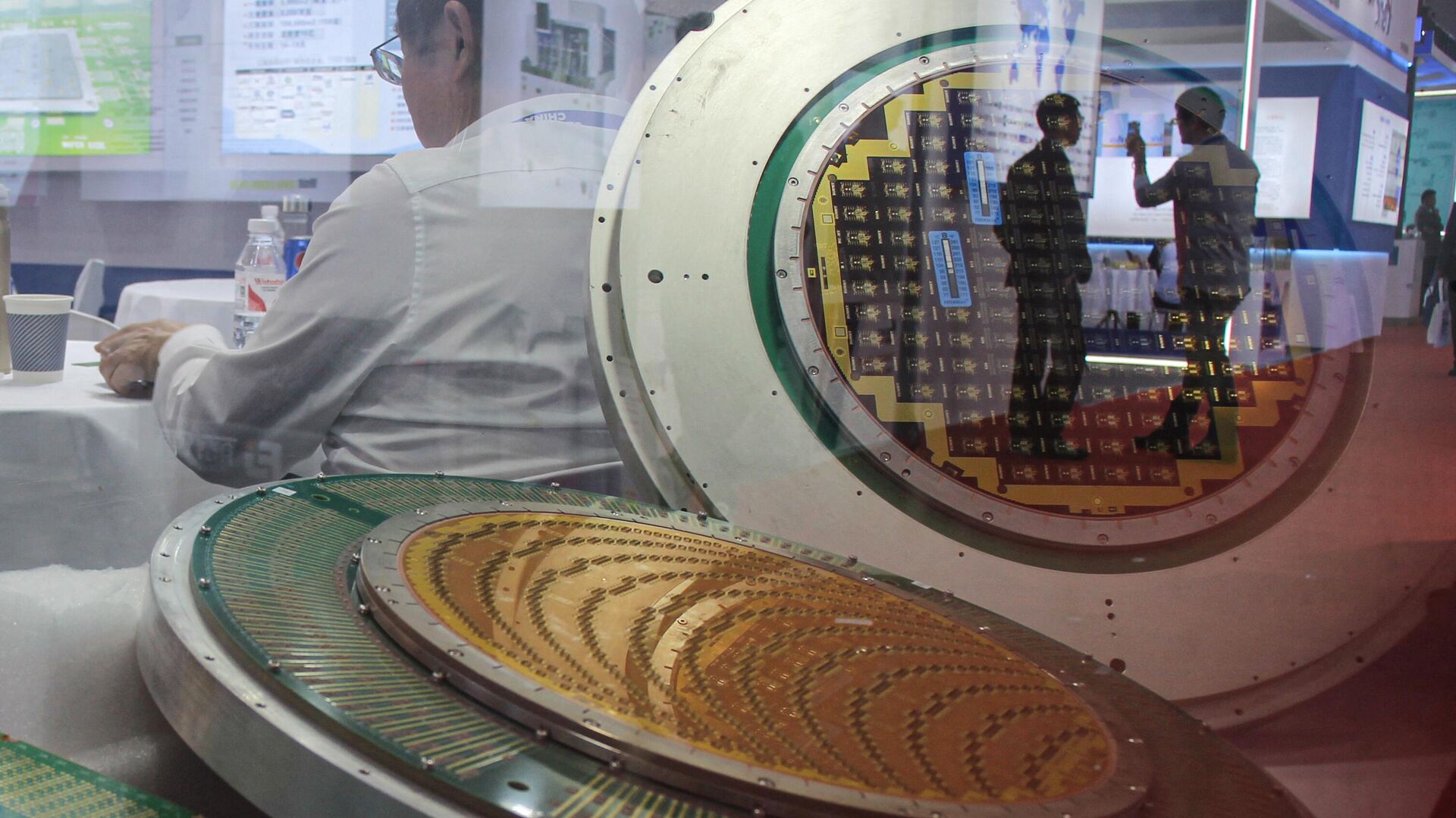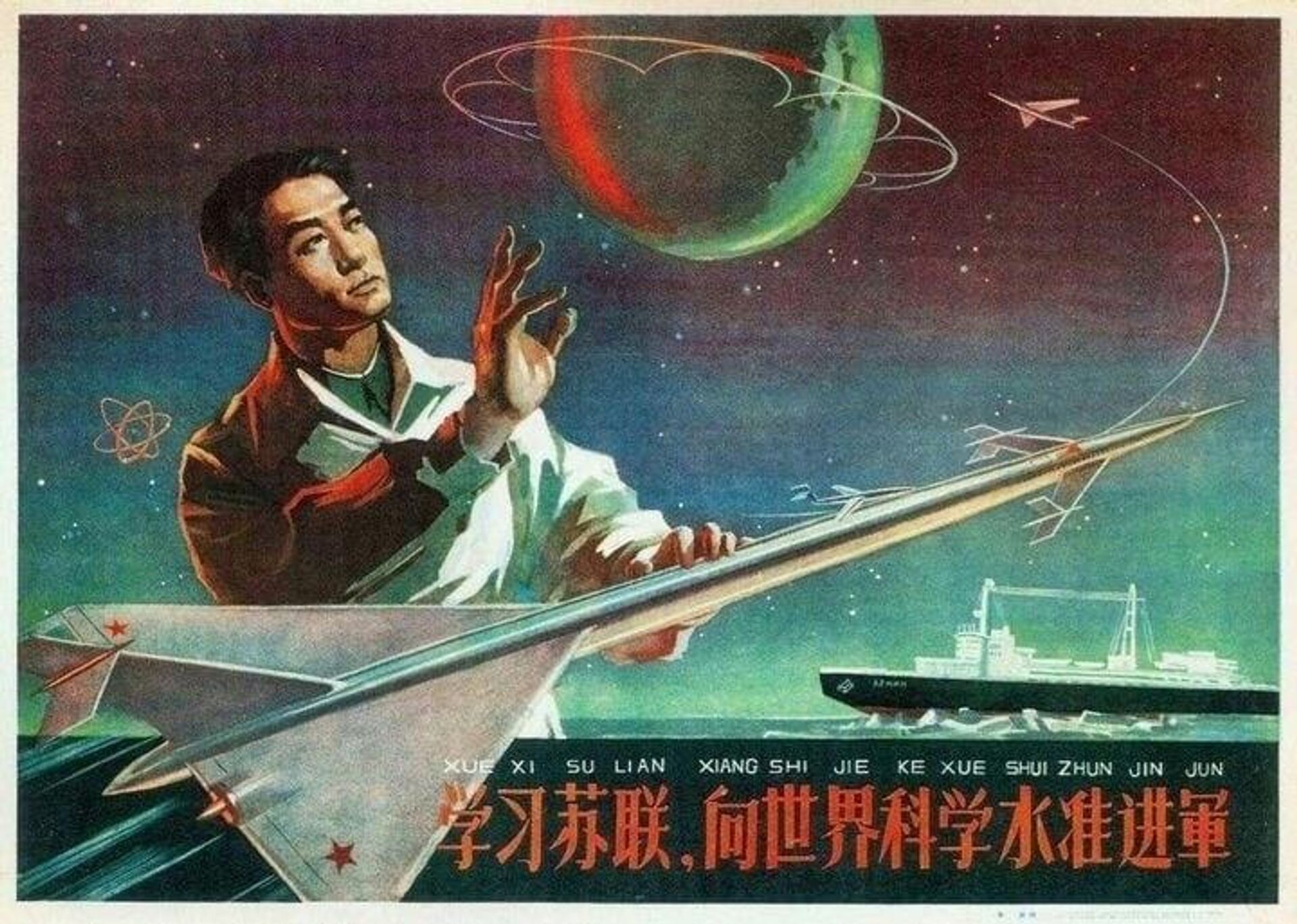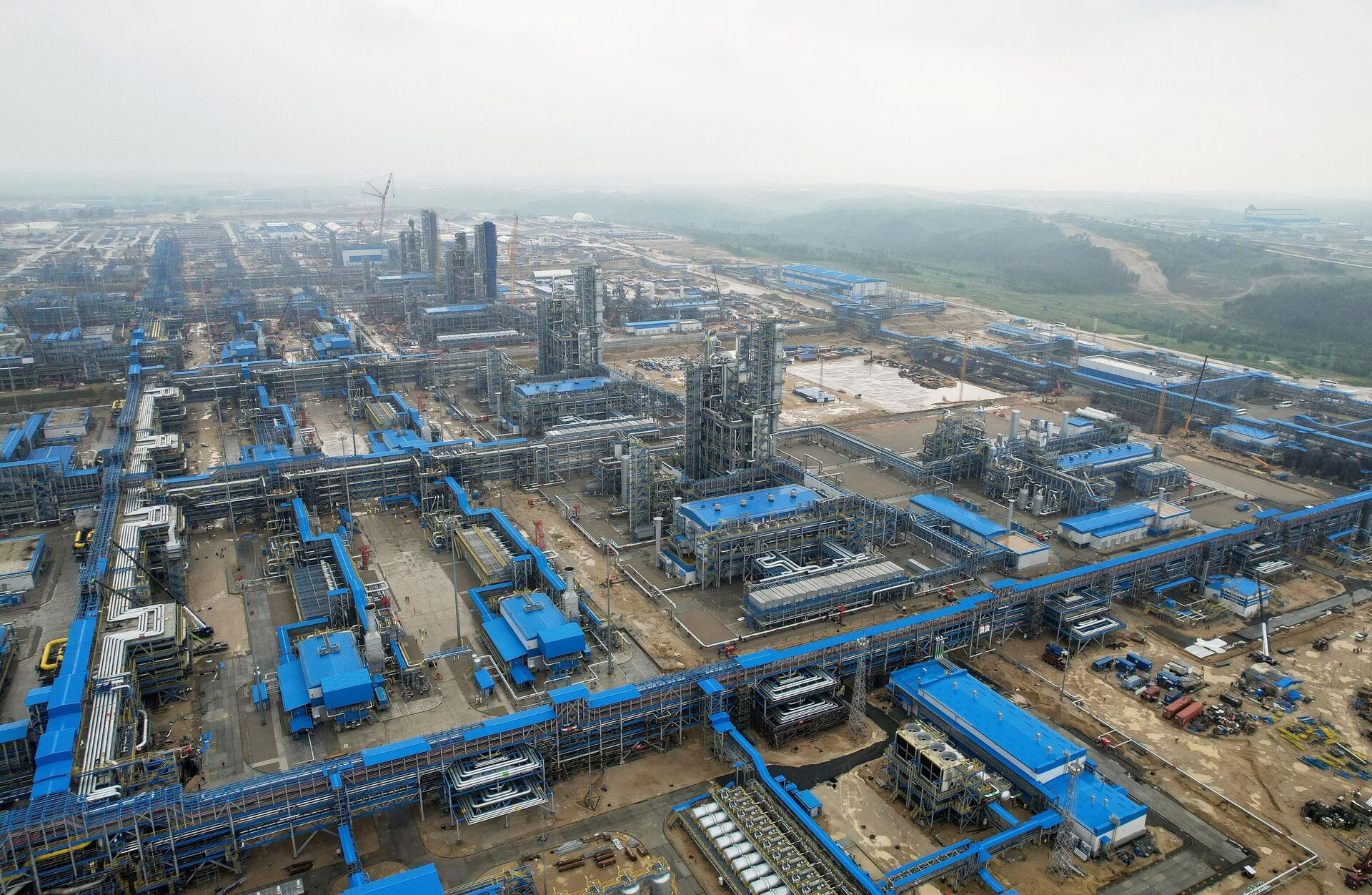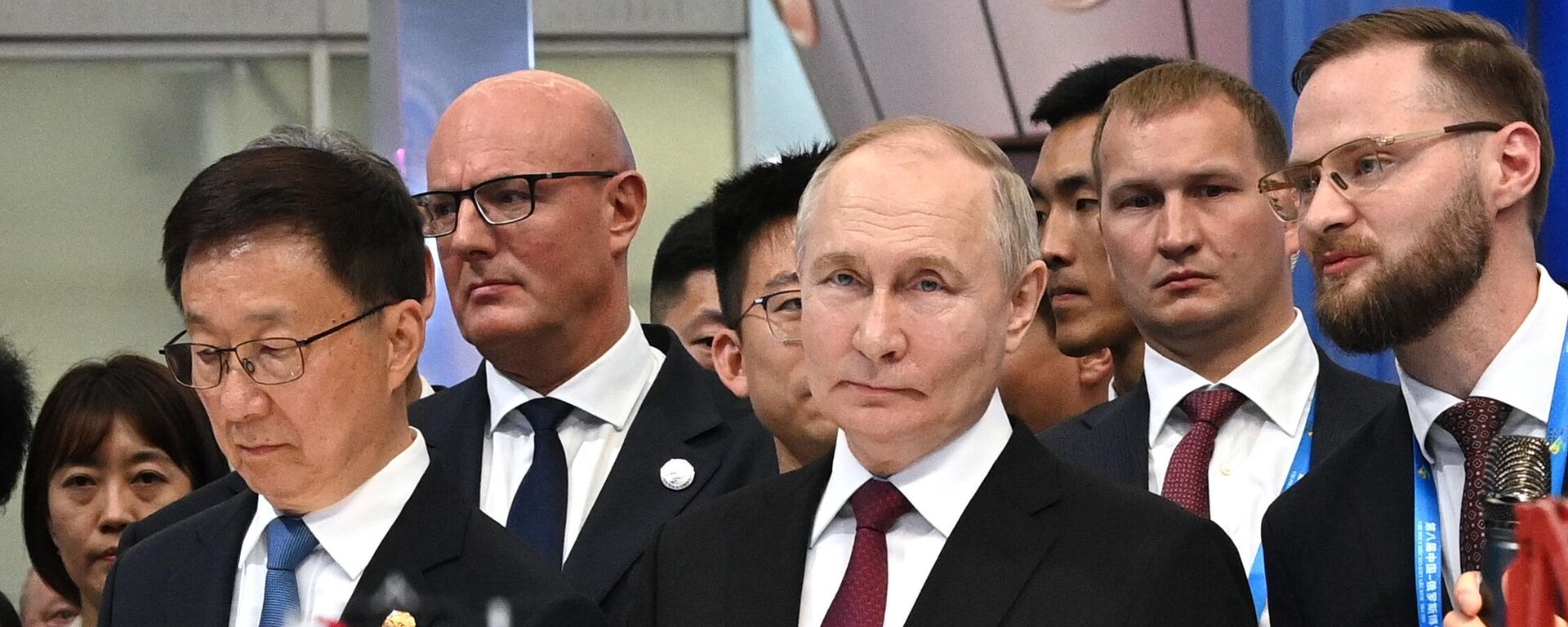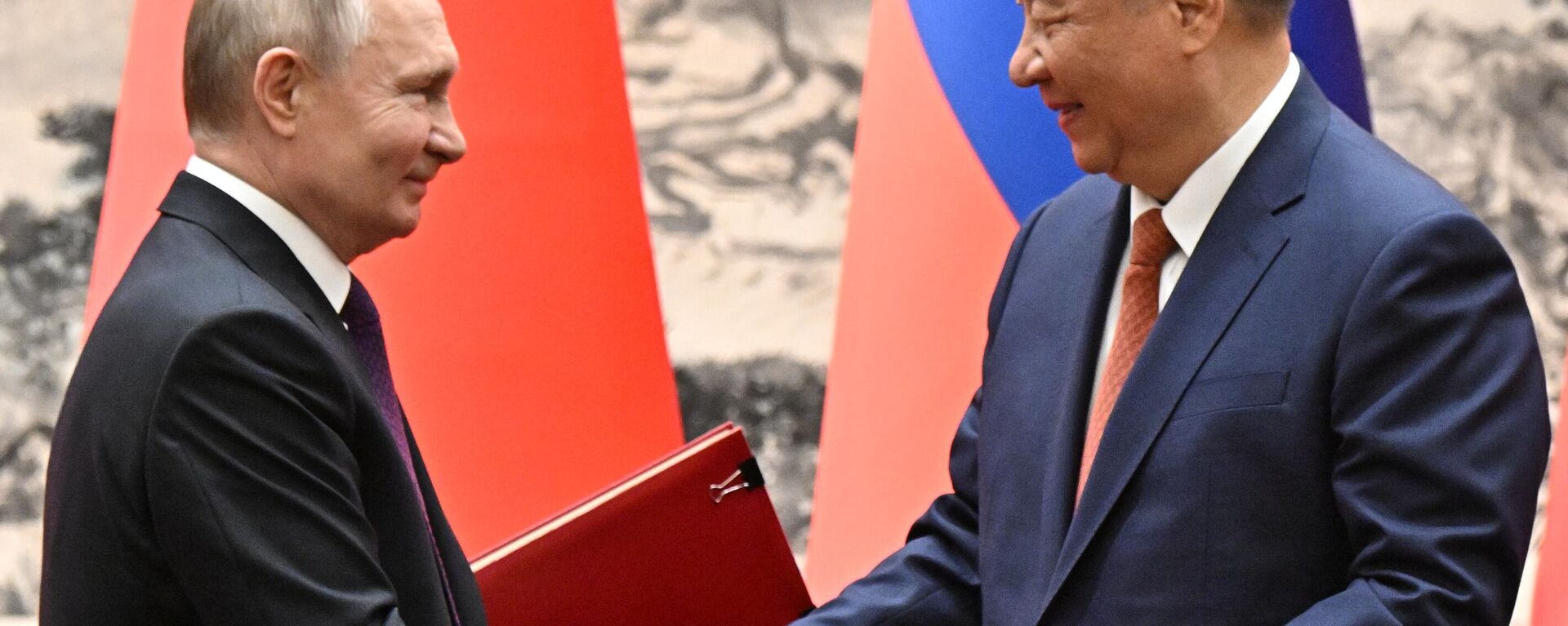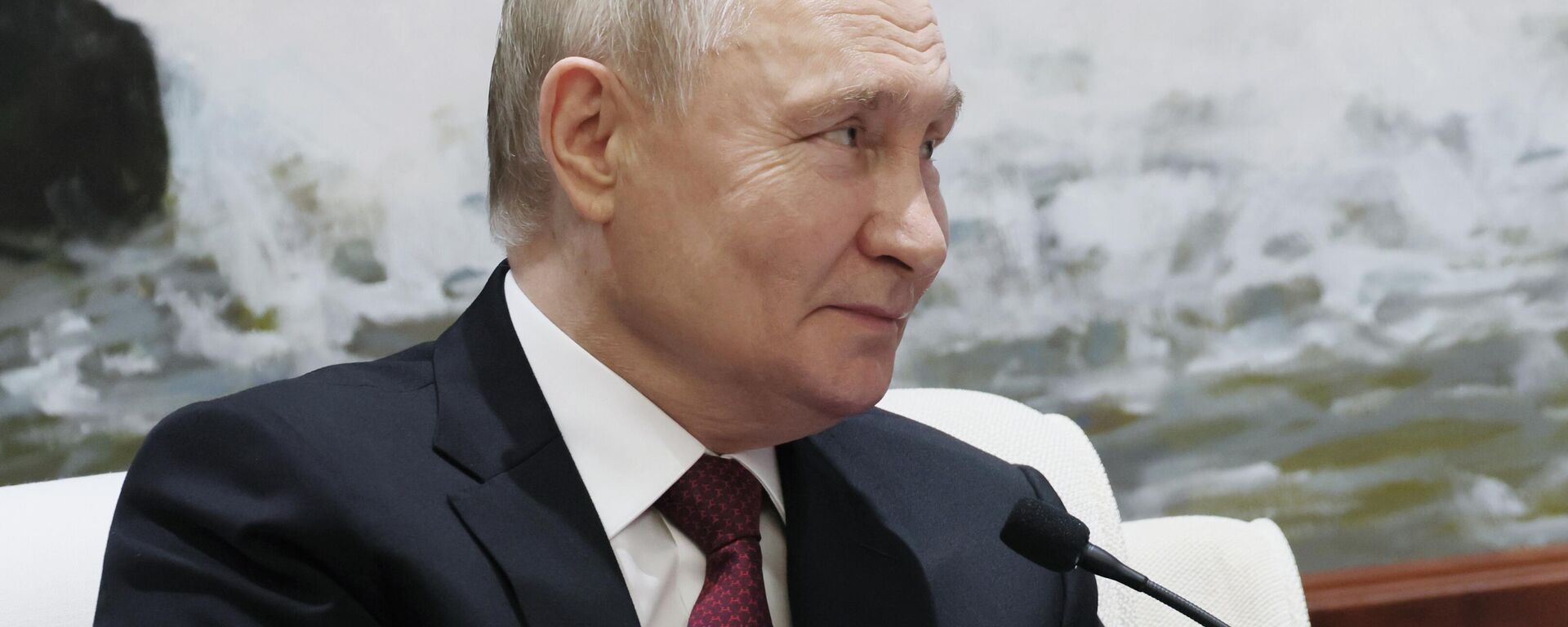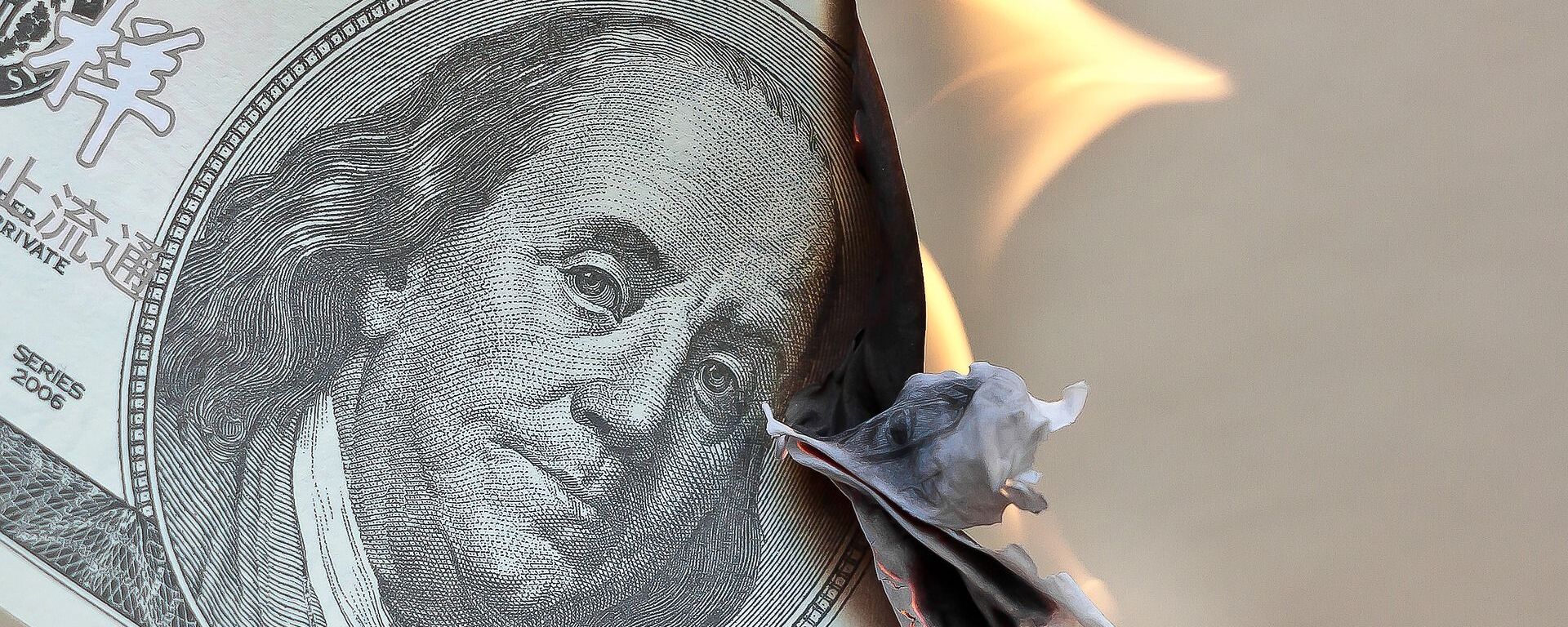https://sputnikglobe.com/20240517/emperor-with-no-clothes-rival-russian-us-takes-on-chinese-tech-reveal-washingtons-weakness-1118502253.html
Emperor With No Clothes: Rival Russian, US Takes on Chinese Tech Reveal Washington’s Weakness
Emperor With No Clothes: Rival Russian, US Takes on Chinese Tech Reveal Washington’s Weakness
Sputnik International
Moscow has announced readiness to offer Chinese investors incentives to localize the production of Chinese goods in Russia, and to give them access to the country’s unique technological expertise and trained cadres. Sputnik asked veteran China watchers how Moscow’s move contrasts with Washington’s approach, and why this is the case.
2024-05-17T16:14+0000
2024-05-17T16:14+0000
2024-05-17T16:14+0000
analysis
china
russia
vladimir putin
joe biden
washington
republic of china
airbus
liquefied natural gas (lng)
power of siberia
https://cdn1.img.sputnikglobe.com/img/07e8/05/11/1118498630_0:157:3012:1851_1920x0_80_0_0_91f4b8dc694fa85817783095bb77bb8b.jpg
Russian President Vladimir Putin has reacted to the Biden administration’s move this week to dramatically hike tariffs on an array of Chinese-made high-tech exports, with his commentary accompanied by a practical proposal to Russia’s Chinese colleagues.This is a perfect example of Washington’s willingness to resort to unfair competition when it suits them, Putin said.Electric vehicles were one category from the array of Chinese high-tech goods hit with tariff hikes by Washington on Tuesday. Semiconductors, solar cells, lithium batteries, ship-to-shore cranes, medical products, rare minerals, steel and aluminum were also targeted, with new higher tariffs ranging from 25 to 100 percent.The Russian leader complemented his remark on American business practices with a practical proposal to Chinese investors.The two countries are already implementing a number of large-scale industrial projects, Putin said, pointing to the active entry of Chinese carmakers into Russia, to the joint plans to create a wide-body long-range jet airliner and a heavy civilian helicopter, and other ventures.Russia and China are also committed to deepening cooperation in the areas of high tech and innovation, and to combining “scientific and research potentials” where possible, Putin said.Russia’s Crucial Role in China’s Economic RiseExpanded Russian-Chinese economic, scientific and technical cooperation goes back nearly 90 years, starting with the USSR’s support for the Republic of China from 1937-1941 against Japanese militarist aggression in the period leading up to the Second World War.After the Sino-Soviet split, the two countries temporarily went their separate ways, with the USSR focusing on Eastern Europe and the Third World, and China focusing resources and energies on forging economic ties with Western countries. Cooperation resumed with the new Russia in the 1990s, accelerating in the 2000s, and expanding dramatically after President Xi Jinping’s election in 2013. Xi, whose family has maintained lifelong sympathies for Russia, its history and culture, made the country his very first destination as president, with cordial Russian-Chinese ties turning into a warm, and personal friendship with Putin.This relationship has been complemented by a dramatic strengthening of the economic and trade relationship between the two countries, with a gradual Russian reorientation away from Europe toward China starting before the escalation of the Ukrainian crisis, but speeding up dramatically ever since. Trade climbed from $89.1 billion in 2013 to over $240 billion a decade later, and is expected to continue to grow in 2024.Contracts have been inked on the creation of a new series of fast neutron reactors in China based on Russian technology, the Xudabao Nuclear Power Plant is expected to come online in 2027-2028, and the two countries have ramped up collaboration in space exploration. Some 92 percent of transactions between Russia and China are carried out using national currencies, making good on efforts by the two countries to move away from the dollar in trade.Opportunity to Make Eurasia Impervious to Western Pressure“China could play to Russia’s strengths, and the list is long: nuclear energy, arms, aerospace, machinery, petrochemical, metallurgy, plant breeding and agriculture for starters. As well, China is tops in supercomputers, robots, 5G-6G, supply chains and logistics, which all complement the aforementioned,” says Jeff Brown, a veteran China expert and author, commenting on President Putin’s offer for Chinese investors to set up production capabilities on Russian territory.The researcher emphasized that it “helps tremendously” that the two countries share a land border connected by rail, road, electric grid and energy infrastructure difficult for adversaries to sabotage.Different Approaches, Different ResultsCommenting on Russia and the US’s opposite approaches to expanding high-tech cooperation with China, Hong Kong-based political and financial analyst Angelo Giuliano suggested that at their core are hidden - and very harsh - economic realities which Washington and its allies don’t want to recognize.The other difference relates to the West’s fear of developing countries as their level of economic prosperity rises. “They have 85% of the rest of the world against the 15%. And they just want to play a game of containing them. If they cannot compete, they will actually contain and create chaos,” the observer said.China, for many decades, has been investing in the production of tangible goods, Giuliano stressed. America’s elites, on the other hand, have created an “inflated…financialized economy” that’s not based on material products, but services and finance, which could easily be washed away and “halved overnight” in a crisis. “So in reality, [the problem] is the structure of the Western economy, which is completely deindustrialized and completely inflated by a financialized economy,” the financial observer believes.As for the prospects for Russian-Chinese high-tech collaboration, the sky’s the limit, Giuliano says.
https://sputnikglobe.com/20240517/putin-visits-russia-china-expo-1118497130.html
https://sputnikglobe.com/20240517/russia-and-china-wont-let-wests-blackmail-block-business-ties--expert-1118489387.html
https://sputnikglobe.com/20240517/russia-china-can-do-lots-by-joining-forces-in-high-tech-areas---putin-1118492787.html
https://sputnikglobe.com/20240513/de-dollarization-bombshell-the-coming-of-brics-decentralized-monetary-ecosystem-1118409748.html
china
russia
washington
Sputnik International
feedback@sputniknews.com
+74956456601
MIA „Rossiya Segodnya“
2024
News
en_EN
Sputnik International
feedback@sputniknews.com
+74956456601
MIA „Rossiya Segodnya“
Sputnik International
feedback@sputniknews.com
+74956456601
MIA „Rossiya Segodnya“
are russia and china stronger than us, what are russia and china's key strengths
are russia and china stronger than us, what are russia and china's key strengths
Emperor With No Clothes: Rival Russian, US Takes on Chinese Tech Reveal Washington’s Weakness
Moscow has announced readiness to offer Chinese investors incentives to localize the production of Chinese goods in Russia, and to give them access to the country’s unique technological expertise and trained cadres. Sputnik asked veteran China watchers how Moscow’s move contrasts with Washington’s approach, and why this is the case.
Russian President Vladimir Putin has reacted to the Biden administration’s move this week to
dramatically hike tariffs on an array of Chinese-made high-tech exports, with his commentary accompanied by a practical proposal to Russia’s Chinese colleagues.
“Recently the Americans imposed sanctions on China’s electric cars. Why? For what reason? Because Chinese cars have become better. There’s no other reason,” Putin said Friday during the second day of his state visit to China.
This is a perfect example of Washington’s willingness to resort to unfair competition when it suits them, Putin said.
Electric vehicles were one category from the array of Chinese high-tech goods hit with tariff hikes by Washington on Tuesday. Semiconductors, solar cells, lithium batteries, ship-to-shore cranes, medical products, rare minerals, steel and aluminum were also targeted, with new higher tariffs ranging from 25 to 100 percent.
The Russian leader complemented his remark on American business practices with a practical proposal to Chinese investors.
“Russia not only welcomes the intention of Chinese business to localize production on territory. We are ready to provide investors from China with economic benefits, assistance and support, as well as access to our unique technological expertise and our highly qualified personnel,” Putin said.
The two countries are already implementing a number of large-scale industrial projects, Putin said, pointing to the active entry of Chinese carmakers into Russia, to the joint plans to create a wide-body long-range jet airliner and a heavy civilian helicopter, and other ventures.
Russia and China are also committed to deepening cooperation in the areas of high tech and innovation, and to combining “scientific and research potentials” where possible, Putin said.
Russia’s Crucial Role in China’s Economic Rise
Expanded Russian-Chinese economic, scientific and technical cooperation goes back nearly 90 years, starting with the USSR’s support for the Republic of China from 1937-1941 against Japanese militarist aggression in the period leading up to the Second World War.
This process dramatically accelerated and became systematized in the war’s immediate aftermath, with Soviet assistance to the newly proclaimed People’s Republic of China greatly aiding the country in the creation of its fledgling industrial and technological base after reunification in 1949. In the 1950s, the USSR helped the new China take its first steps toward industrial superpower status, providing the material assistance, and technological knowhow, to build its first car, truck and agricultural machinery plants, heavy machine building, metallurgy and precision instrument enterprises, and defense sector industries. The USSR provided the PRC technical documentation and training for the creation of China’s first nuclear power reactor and particle accelerator, its first aircraft, modern railway infrastructure, and its new chemical, nitrogen fertilizer, calcium carbide, and synthetic dyes industries.
After the Sino-Soviet split, the two countries temporarily went their separate ways, with the USSR focusing on Eastern Europe and the Third World, and China focusing resources and energies on forging economic ties with Western countries. Cooperation resumed with the new Russia in the 1990s, accelerating in the 2000s, and expanding dramatically after President Xi Jinping’s election in 2013. Xi, whose family has maintained
lifelong sympathies for Russia, its history and culture, made the country his very first destination as president, with cordial Russian-Chinese ties turning into a warm, and personal friendship with Putin.
This relationship has been complemented by a dramatic strengthening of the economic and trade relationship between the two countries, with a gradual Russian reorientation away from Europe toward China starting before the escalation of the Ukrainian crisis, but speeding up dramatically ever since. Trade climbed from $89.1 billion in 2013 to over $240 billion a decade later, and is expected to continue to grow in 2024.
In 2023, Russia became China’s largest oil supplier, selling 107 million tons to the PRC (an increase of 24 percent from 2022). Coal exports shot up nearly 1.5 times, surpassing 100 million tons, Russian LNG exports jumped 23 percent to eight million metric tons, piped gas via the Power of Siberia pipeline grew 47 percent to 22.7 billion cubic meters, and Russia also exported billions of dollars’ worth of minerals, wood, pulp, paper, metals and food. In return, Russia purchased an array of Chinese-made industrial and technological equipment, including vehicles, machinery, chemicals, textiles, metals, and consumer goods. Chinese imports proved a lifesaver in the wake of crushing US and European sanctions, which attempted to grind Russia’s economy to a halt and collapse its technological base.
Contracts have been inked on the creation of a new series of fast neutron reactors in China based on Russian technology, the Xudabao Nuclear Power Plant is expected to come online in 2027-2028, and the two countries have ramped up collaboration in space exploration. Some 92 percent of transactions between Russia and China are carried out using national currencies, making good on efforts by the two countries to move away from the dollar in trade.
Opportunity to Make Eurasia Impervious to Western Pressure
“China could play to Russia’s strengths, and the list is long: nuclear energy, arms, aerospace, machinery, petrochemical, metallurgy, plant breeding and agriculture for starters. As well, China is tops in supercomputers, robots, 5G-6G, supply chains and logistics, which all complement the aforementioned,” says
Jeff Brown, a veteran
China expert and author, commenting on President Putin’s offer for Chinese investors to set up production capabilities on Russian territory.
“Both are working to build wide-bodied commercial jets to compete with Boeing and Airbus, so could combine forces. They each have unique advantages in medicine and pharma. China’s top high-tech schools (Tsinghua, Peking, Shanghai Jiao Tong, Fudan, USTC, etc.) could build campuses in Russia, with a strong focus on R&D. Both countries need to get much better at AI and microchips, so finding mutual synergies would be beneficial to both sides,” Brown told Sputnik.
The researcher emphasized that it “helps tremendously” that the two countries share a land border connected by rail, road, electric grid and energy infrastructure difficult for adversaries to sabotage.
“All of these possibilities would go great lengths to help each country individually and together, as Western empire desperately throws NATO and every boycott, blockade, tariff and sanction it can at both countries, Brown said.
Different Approaches, Different Results
Commenting on Russia and the US’s opposite approaches to expanding high-tech cooperation with China, Hong Kong-based political and financial analyst
Angelo Giuliano suggested that at their core are hidden - and very harsh - economic realities which Washington and its allies don’t want to recognize.
“I think the fundamental difference between the multipolar world and the unipolar world is that the unipolar world is looking at not making the [economic] ‘cake’ bigger, but taking the larger size of the cake. While the multipolar world is about how we can make the cake bigger and more equitable. So it's about common prosperity,” Giuliano told Sputnik.
The other difference relates to the West’s fear of developing countries as their level of economic prosperity rises. “They have 85% of the rest of the world against the 15%. And they just want to play a game of containing them. If they cannot compete, they will actually contain and create chaos,” the observer said.
The US “is very scared” of the PRC’s economic potential “because in reality Chinese development, especially in high tech - is exponential. The reason is very simple. It is because China has five to six times more science, technology, math-engineering graduates that come out of universities every year, and they are actually investing a lot of money into R&D, which the US is not,” Giuliano said.
China, for many decades, has been investing in the production of tangible goods, Giuliano stressed. America’s elites, on the other hand, have created an “inflated…financialized economy” that’s not based on material products, but services and finance, which could easily be washed away and “halved overnight” in a crisis. “So in reality, [the problem] is the structure of the Western economy, which is completely deindustrialized and completely inflated by a financialized economy,” the financial observer believes.
As for the prospects for Russian-Chinese high-tech collaboration, the sky’s the limit, Giuliano says.
“China is providing its high-tech platform to Russia because China is more advanced in in high tech fields,” Giuliano said. “So China could compensate for whatever Russia is missing in its economy. On the other side, Russia is providing energy resources like gas, oil and raw materials and agricultural to China, so in exchange China is providing access to high tech consumer products. And China is also providing infrastructure.”
